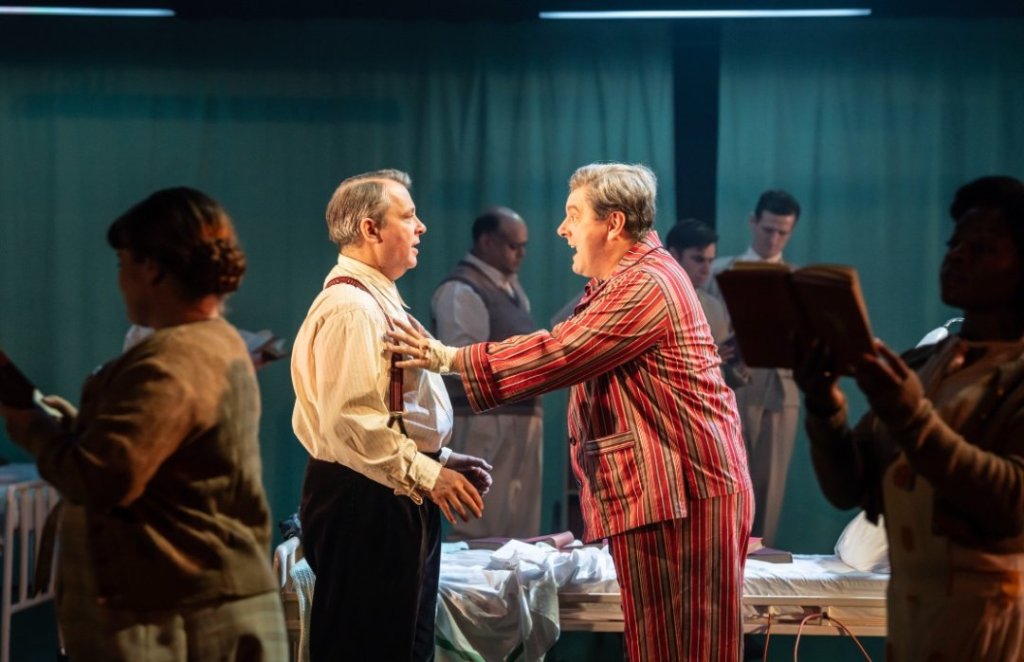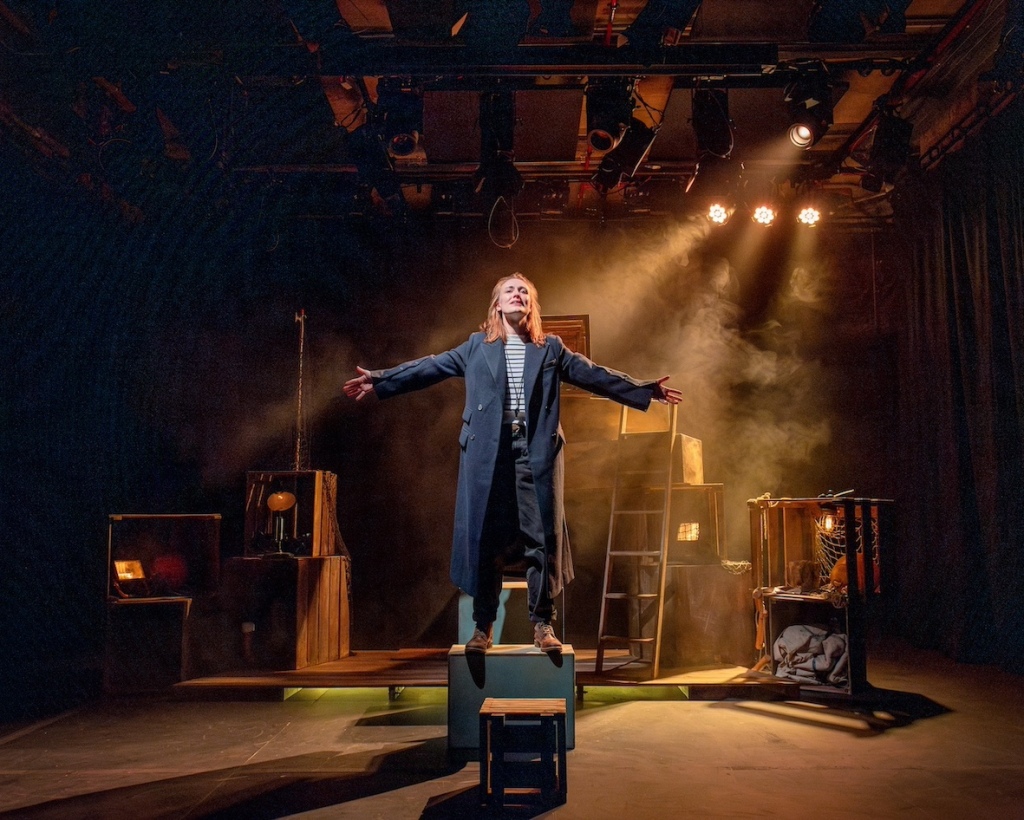
A Midsummer Night’s Dream by William Shakespeare – Wilton’s Music Hall, London
Henry Maynard’s Flabbergast Theatre is an unapologetically physical theatre company, building a reputation for staging Shakespeare in a style that owes a lot more to Grotowsky than it does to the Globe. Flabbergast’s Macbeth, seen last year at the Southwark Playhouse, delivered energy and imagery at the expense of the text. They have followed it up with A Midsummer Night’s Dream, staged in the much-loved Wilton’s Music Hall. The result is the same, only more so.
There are things to like about the production. The setting, designed by Maynard who also directs, is dominated by a hay wain, a cart used like the York Mystery Plays waggons as both stage and set. It fits the play beautifully, with Titania and Bottom nestled above the action watching the lovers in the woods. Costumes, also Maynard’s work, are striking, with the Mechanicals wearing half masks, and an exciting profusion of tartan trousers, dressing gowns, periwigs and golden ram’s horns in evidence (although Oberon’s gold mankini very much outstays its welcome). However, although the physicality of the performances and the commitment to clowning is unquestionable, the result is to make the show less rather than more accessible.
Performances ratchet up to 11 from the first lines, and stay there for two and half hours. There is no departure from full-on mania, from every character in the play. In the opening scene Hermia’s father, Egeus, in crazed 18th century dresses, lurches, bounds and leers around the stage, a grotesque parody of… what? The connection between the characters and any recognisable reality is instantly severed, and from then on the audience struggles to understand what it is seeing, or why. There is no value in picking out performers, but the entire company performs in a way that is mannered in the extreme. Almost every single line is illustrated by the performer acting it out in capering dumbshow. Combined with the masks and the exaggerated accents on display, it makes much of the text inaudible and the rest incomprehensible. It really is impossible to follow what is going on, as characters set fire to the best know poetry in the language and push it over a cliff. It is an exhausting watch.
Flabbergast Theatre are not about the text, that is understood. Their physical style promises much, and anyone who takes a different approach to Shakespeare deserves respect. Unfortunately though, A Midsummer Night’s Dream really does not work. The lack of variation in tone, and the absence of character or nuance, rapidly diminishes the effect of the full octane clowning. Physical theatre is a subtle, powerful tool but, in one of the most atmospheric plays ever written, Maynard’s show has no room for mood. That really is a mistake.







